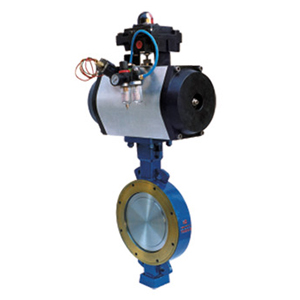Valves are fundamental mechanical devices used to regulate the flow of fluids and pressure within a system. They perform a variety of functions, such as starting and stopping fluid flow, controlling the amount of fluid flow, checking the flow, controlling the direction of fluid flow, preventing backflow, regulating downstream system pressure, and relieving over pressure. This article will focus on butterfly valves, a type of valve commonly used in industrial applications. Specifically, we will discuss the Signal butterfly valve, a well-known brand with several unique features.

What is a butterfly valve?
A butterfly valve is a quarter-turn valve used to regulate fluid flow. The valve consists of a disc or a vane that rotates around a central axis to control the flow of fluids. The disc is connected to a shaft that passes through the valve body and is operated by an actuator. When the valve is fully opened, the disc is perpendicular to the flow direction, allowing for full fluid flow. When the valve is fully closed, the disc is parallel to the flow direction, blocking fluid flow entirely.
Types of Butterfly valves
Butterfly valves are classified based on the type of disc they use. The most common types of butterfly valves are:
1. Concentric butterfly valve
2. Double offset butterfly valve
3. Triple offset butterfly valve
Concentric butterfly valves have a disc that is centered on the valve stem axis. This type of valve is suitable for low-pressure applications and is the most economical option. Double offset butterfly valves have a disc that is offset from the valve stem axis and is suitable for high-pressure applications. Triple offset butterfly valves have a disc that is not only offset from the valve stem axis but also inclined from the seat. This design provides a tight seal and is the most suitable for high-temperature and high-pressure applications.
Signal Butterfly Valve
The Signal butterfly valve is a high-performance valve manufactured by Signal Process Equipment Inc. The valve is designed to provide precise flow control in a variety of industrial applications. The Signal butterfly valve has several features that make it a preferred choice for many industries.
1. Low operating torque - The Signal butterfly valve has a low operating torque due to its unique disc design. The valve disc is designed to reduce the friction between the disc and the valve seat, resulting in lower torque requirements.
2. Bi-directional flow - The Signal butterfly valve is designed to operate in both directions, offering greater flexibility in fluid flow control.
3. Bubble-tight seal - The Signal butterfly valve has a bubble-tight seal, preventing leakage even at high pressures.
4. Ease of maintenance - The Signal butterfly valve is easy to maintain due to its simple design. The valve disc can be easily removed for cleaning and maintenance.
Applications of Signal Butterfly Valve
The Signal butterfly valve is used in several industries to regulate fluid flow. Some of the applications of the Signal butterfly valve include:
1. Chemical processing
2. Water treatment
3. Oil and gas industries
4. HVAC systems
5. Food and beverage processing
Conclusion
In conclusion, butterfly valves are essential mechanical devices used to regulate fluid flow and pressure within a system. The Signal butterfly valve is a high-performance valve manufactured by Signal Process Equipment Inc. The valve has several unique features such as low operating torque, bi-directional flow, bubble-tight seal, and ease of maintenance. The Signal butterfly valve is used in various industrial applications, including chemical processing, water treatment, oil and gas industries, HVAC systems, and food and beverage processing.